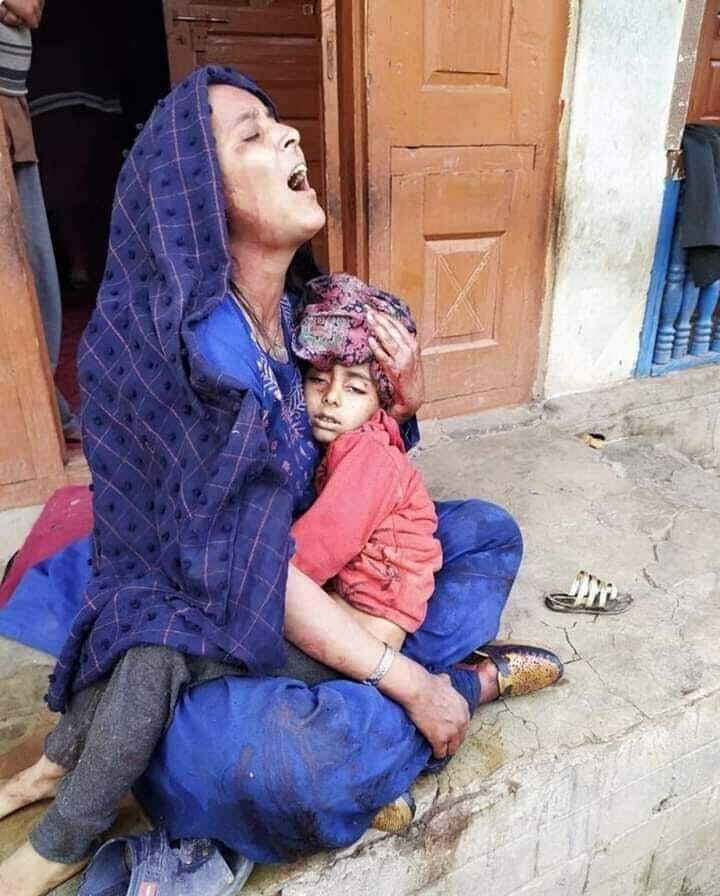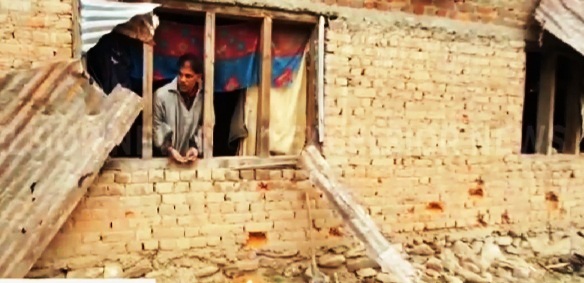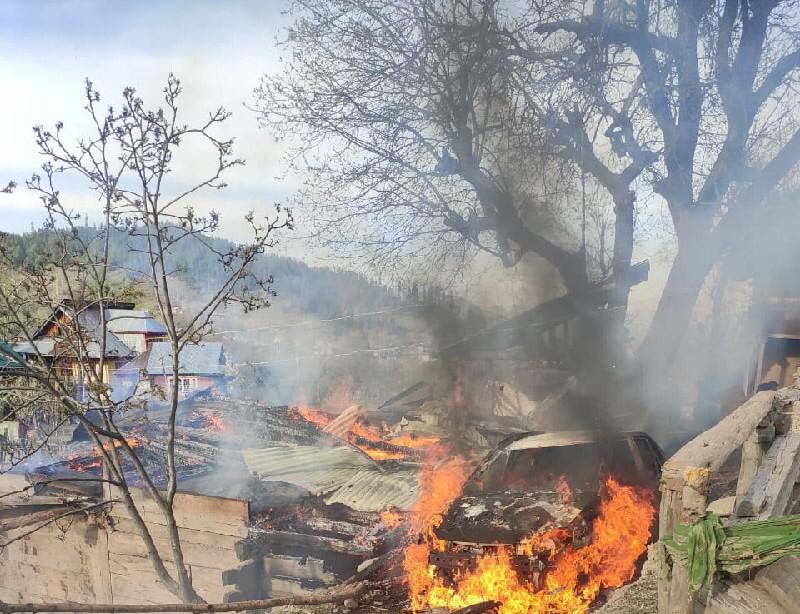
At about 60km from combative LoC, a fleeting act of war enacted in pandemic times shuddered all and sundry, especially when a mother lapping her dead son became its tragic face. But beyond the disturbing farewell and the fresh frontier fireworks, as another warfront reared its ugly head, many Kashmiris asked: ‘Why on our bodies, homes’.
Auqib Javeed
Kupwara: A day after three bodies were retrieved from the smouldering rubble in bombed Kupwara hamlets, some mournful villagers returned to see their homes, barns, cowsheds and coops reduced to a warzone site.
The air still smelt of bitter smoke, while a dented car stood like mangled iron adjacent to a corpus of charred wood. The scalded wreckage reminded many of the nightmarish nineties when frequent arsons would inflict scorched scars in parts of Kupwara.
Two women stood inconsolable in front of their blasted home, sobbing: “They should better kill us at once, than this!”
Their cries made a howling sound, as a shrapnel-wounded villager nearby rolled up his trouser to show his bandaged limb to scribes.
At a stone’s throw, a middle-aged man sat in front of his shell-ripped home. He broke down like a baby over the sudden devastation unleashed on this idyllic hamlet, tucked around 60km from the explosive Line of Control.

When shells suddenly landed on this postcard countryside pocket from across the LOC on Sunday, many villagers felt that a new warfront has emerged from their backyard.
Amid raining shells, a desperate run-for-life, trailed by screams and cries, ensued.
“We ran without footwears, leaving behind all our belongings,” said a relative of the mother of four children, who was killed in Sunday’s shelling along with two other villagers, including a minor of a neighbouring hamlet.
“Cops tried to resist our run amid pandemic, but as shells rained, there was no question of staying back. We had to spend a night in another village.”
In times of coronavirus scare, the villager said, not many doors were thrown open for them. “It was like running death and landing in darkness.”
But before the shells would drive them out, panic had gripped in North Kashmir’s Kupwara district on Friday after Indian Army moved artillery weapons in an open field surrounded by over 200 houses in Panzagam and Rawatpora villages.
Next day, fearing imminent firepower response from the other side, the locals staged a strong protest against the move.
The protest was driven by the recent war panic.
Last year, on October, as Kashmir was reeling under political lockdown over the abrogation of J&K’s special status, Reddi village in Chowkibal, witnessed ear-shattering shelling, making villagers believe that it was a prelude of new Indo-Pak war amid Islamabad’s UN showdown and diplomatic offensive.
Before October, the villagers said, they hadn’t witnessed any shelling from other side.

On Sunday, when their courtyards once again threatened to become a combat-zone, the villagers came out of their homes, defying the pandemic precautions, to lodge their strong protest against the move.
Even as the district administration suspended internet in the area, some videos showing Panzgam locals having heated arguments with the troops went viral on social media.
Inside the artillery field, the villagers can be seen shouting at soldiers: Kill our kids instead of escalating the situation amid novel coronavirus scare.
“We’re living in fear for last 20 days,” said a local villager. “An ongoing heavy shelling had already robbed us of our mental calm, before they tried to open a new warfront here.”
Sunday’s shelling is seen as part of recent LoC flare-up triggered by the deadly Karen gunfight, which left 5 militants and 5 paratroopers dead.
Amid the explosive frontier, what surprised many was the shelling in Panzgam, which is around 60km from LoC. How did shells land so far, that too, in human habitations is still an unanswered question.
Sensing the life damage and incensed mood, the army has now vacated the field. But the sense of loss and hurt still runs deep.
When Kashmir Observer contacted Srinagar-based Indian Army PRO on this and the artillery move, he said, “I’ll check and revert.” As and when he reverts, this copy will be updated.
The artillery was placed in an open-field, used by locals as playground. It previously served as army helipad, they said.
The assault, however, has already created a crisis for these villagers.
Amid pandemic when social distancing is being practiced, they said, they can’t even seek refuge in others’ home.
“We’re the worst sufferers of the frontier confrontation,” said a cousin of a teenage boy killed in the shelling. “Why should they fight over our bodies and homes?”
In a neighbouring village of Tumina, where a mother was photographed on porch lapping her dead son, the tears and the fears competed with each other.
Benumbed with tragedy, the mother was still being consoled by her equally devastated family members.
“After all this, we want government to resolve Kashmir Issue through talks and spare us from this torment,” said Firdous Ahmad Wani, a local in Panzgam.
“This madness should end. Our people don’t deserve to be killed like this!”
Follow this link to join our WhatsApp group: Join Now
Be Part of Quality Journalism |
Quality journalism takes a lot of time, money and hard work to produce and despite all the hardships we still do it. Our reporters and editors are working overtime in Kashmir and beyond to cover what you care about, break big stories, and expose injustices that can change lives. Today more people are reading Kashmir Observer than ever, but only a handful are paying while advertising revenues are falling fast. |
| ACT NOW |
| MONTHLY | Rs 100 | |
| YEARLY | Rs 1000 | |
| LIFETIME | Rs 10000 | |









